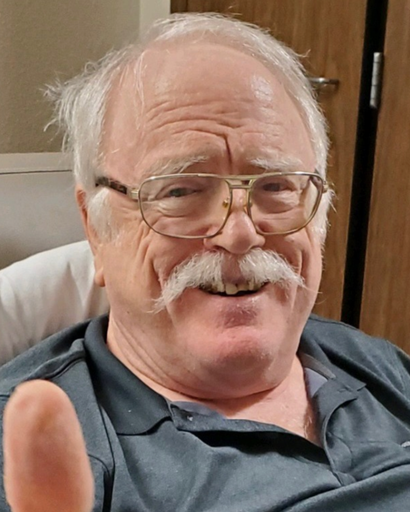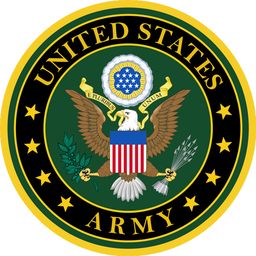

Charles R. Thigpen
February 7, 1943 — November 9, 2024
Oklahoma City, OK

Charles was the first child of Dr. Charles R Thigpen Sr and Mary Elizabeth Robertson Thigpen. His early years were spent moving frequently around Oklahoma as his father was assigned to various churches in the state. As he was moving from Grade School to Junior High School, his father was assigned to a church in New Mexico. This led to much of his love for the Native American culture. The family returned to Oklahoma for his senior year in high school where he graduated from Ponca City High School. To help fit in this new environment he began using what would become his lifelong hobby of photography.
Upon graduation, he completed his first year of college at Southwestern College in Winfield, KS. He returned to Oklahoma and attended Oklahoma City University, where he learned the only sport he truly loved—Fencing.
He met his first wife, Evelyn Mathey, and later welcomed his first son, Charles “Rex” Thigpen. Soon after they were married, he served in the Vietnam War. He found himself assigned to the Signal Core (photography) unit, but the leader of a Green Beret unit identified needed skills and recruited him to join them. He became the company medic and scrounger. While he never wanted to think about the horrors of war, he would later build a career based on things he learned there that carried him through the rest of his life.
Upon returning from Vietnam, like most of the era vets, he was met with words of hate. While he could not reconcile all that happened in Vietnam, he took his experience and began a lifelong career of providing medical care to others. He used his medical training working in the clinic at the University of New Mexico where he gained a degree in pre-medical sciences. He provided care all around New Mexico both on and off duty. He developed a training program, for his definition of “first responders” --those who were on the scene of an accident first allowing them to provide care before medical personnel arrived. He wrote a training manual and instructed men and women across New Mexico including on several reservations where medical care was scarce. He was accepted by the tribes and awarded with a medicine bag for his efforts.
When his first marriage ended, he was recruited to bring his program to Oklahoma. He worked initially in a private program, but eventually went to work for different agencies with the State of Oklahoma, where he would finish his career. He called himself the “token medical person” amongst the bridge and road builders at the State Department of Transportation. He traveled from Guymon to Antlers teaching people who worked with no quick access to medical care how to perform CPR and provide first aid till help could arrive.
In Oklahoma he met and married Teddi Long. He and Teddi had his only daughter, Temple. She is his “favorite and only” daughter. Despite an end to this marriage and struggles with his undiagnosed ADHD, Charles forever tried to be the best dad he could.
Music was an integral part of Charles’s life. He sang in choirs in his father’s churches, his colleges and community groups, and the military. It was on a church choir trip to Washington D.C and New York City, that he met his third and last wife, Alaine Baker, a fellow member of the choir. They were friends at first, but a love grew and after 7 years they married. Together they had a son, Brian, who lit up Charles’s life. Charles retired from ODOT at the age of 65, became a stay-at-home dad to Brian, and used his extra time to take his father and mother to lunch almost every week until their passing.
Charles’s life was not easy. He always said he had ADHD when it was spelled BRAT. Being left-handed in the 1940’s didn’t help either. As a hyperactive preacher’s kid, there was always someone around who felt they had the right to tell him how to behave. He worked hard to learn the “rules” of society and gave all he had in a life of service. Be it the track medic at Motocross events, the crowd medic at early Blazer’s hockey games at the fairgrounds, or caring for the support staff of every event he was a part of, Charles always sought to help. Those who knew Charles knew they never had to go without a flashlight or other tool to make their job easier. He never had much, but he would always give what he had to someone he saw in need. He was known to carry extra jackets in the car to give to children standing at the bus stop who appeared cold. He would try to soothe a hurting soul in addition to caring for a broken body. Many people did not understand his actions. For this reason, he struggled to be accepted in many situations but those who really knew Charles would say there was never a more generous man.
In early 2024 he began to have more issues with his memory and was diagnosed with Alzheimer’s in a rapidly advancing form forcing him to move to a memory care unit. Even there he continued to try to help others by setting the table and always making sure he had extra napkins for those in need.
Charles is survived by his wife, Alaine, son Brian, daughter Temple Pitts and her husband Chris, his son “Rex”, his brother John and his wife Dee, and his niece, Bonnie Bryne, and her family. He is also survived by many cousins and friends/”family of choice” from throughout his life. The family also expresses thanks to Saddlebrook Memory Care and Oklahoma City Hospice for the excellent care in his last few months.
A memorial service will be held at the Quail Springs United Methodist Church in Oklahoma City, OK on November 23, 2024, at 10:00 am.
In lieu of flowers, the family requests gifts to the American Alzheimer’s Association, the Quail Springs United Methodist Church to continue ministries close to his heart, or the charity of your choice.
Service Schedule
Past Services
Memorial Service
Saturday, November 23, 2024
Starts at 10:00 am (Eastern time)
Quail Springs United Methodist Church
Guestbook
Visits: 154
This site is protected by reCAPTCHA and the
Google Privacy Policy and Terms of Service apply.
Service map data © OpenStreetMap contributors



